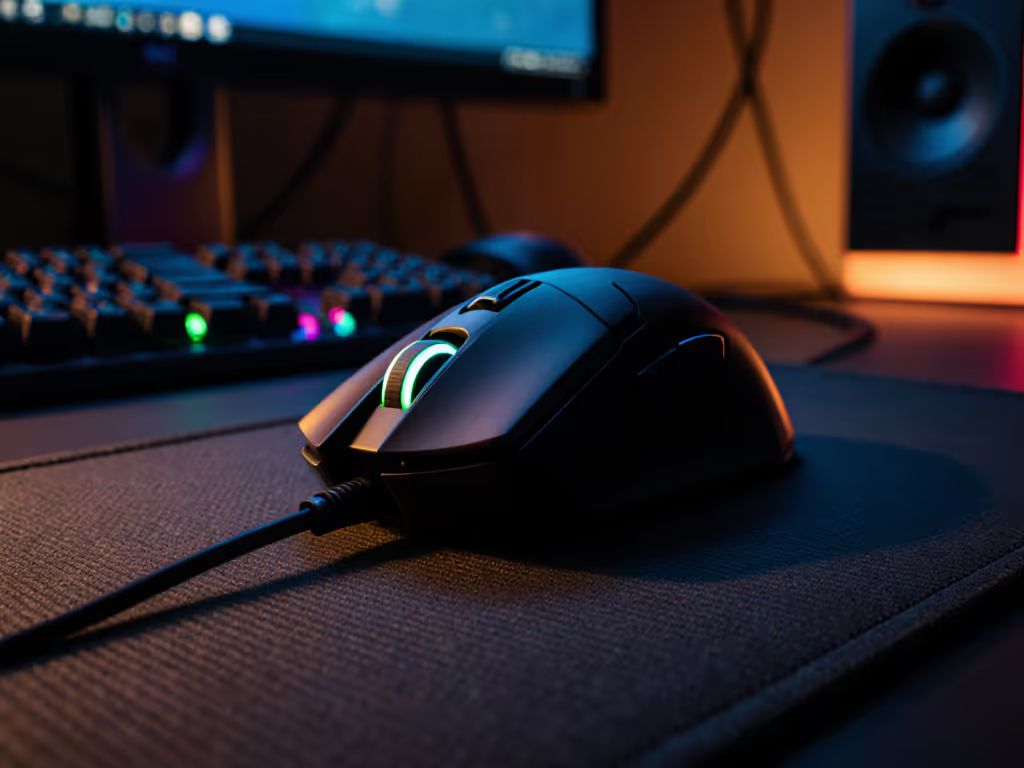
Measure Your Hand for the Best Left-Handed Gaming Mouse
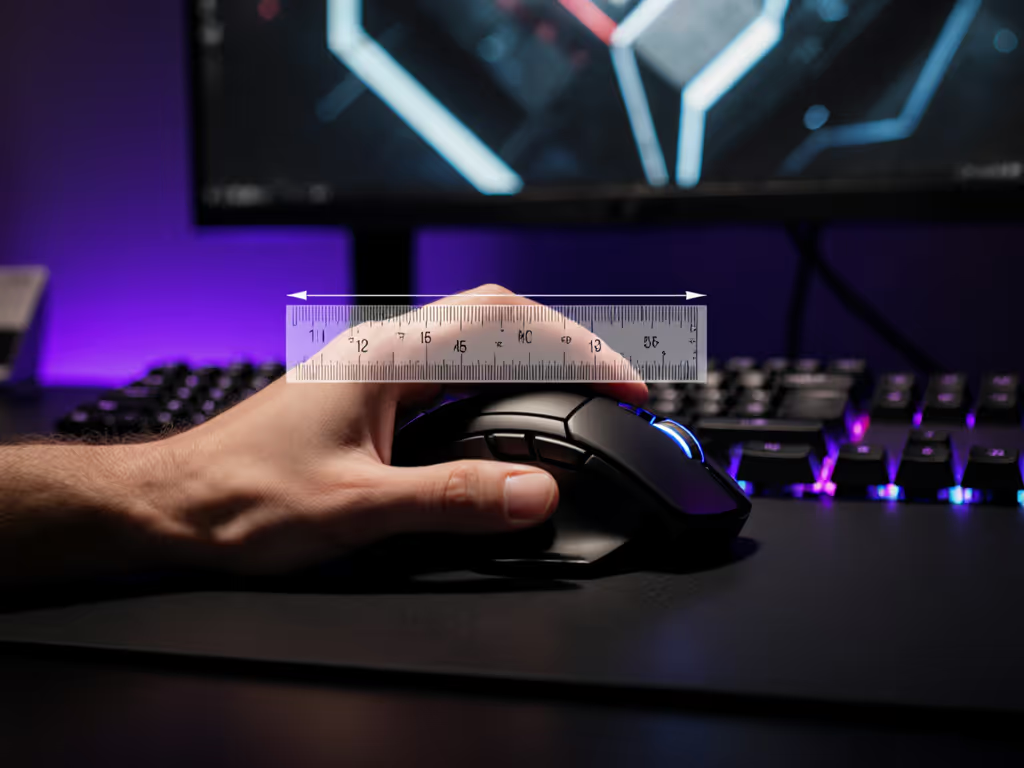
Finding the best left-handed gaming mouse often feels like navigating a maze built for right-handed players. Too many lefty gamers accept compromises (pinched pinky gaps, awkward thumb rests, or shells that force unnatural wrist angles) until pain becomes part of their warm-up routine. But what if your mouse could support your anatomy first, so your aim improves naturally? The best left-handed ergonomic mouse isn't about flashy specs; it's about measurements that match your skeletal structure. Pain-free hands play steadier; comfort multiplies your precision. After years running hand-fit clinics, I've seen how neutral alignment transforms aim stability, not by chasing speed, but by eliminating resistance between your intent and execution.
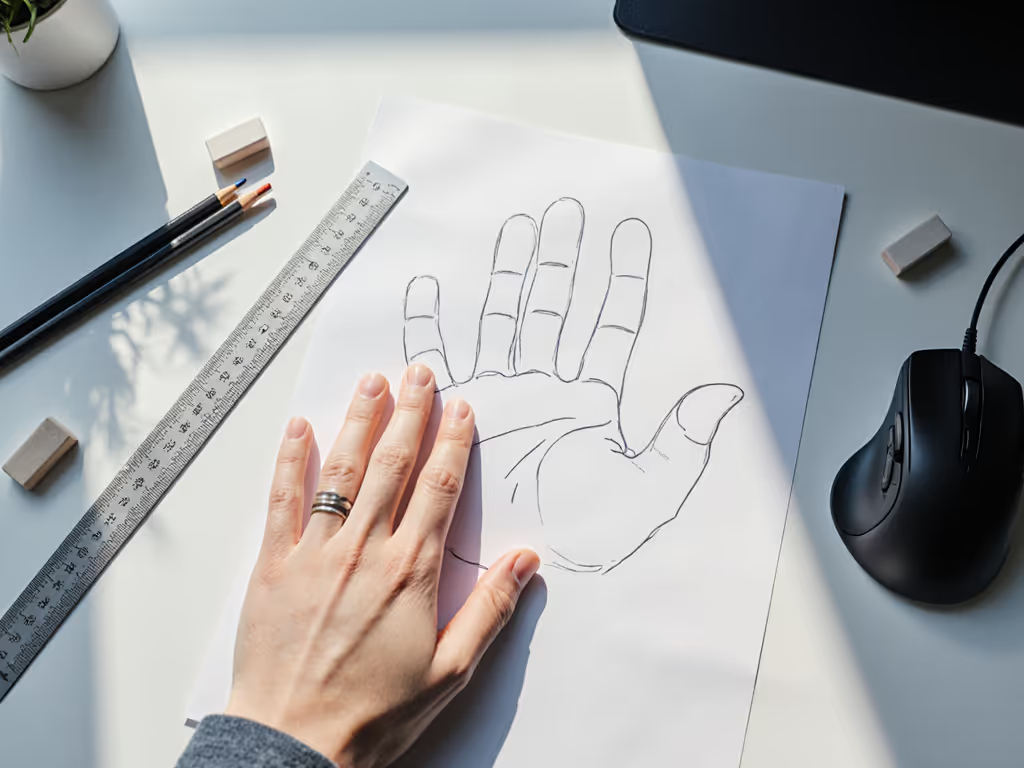
Why Measurement Beats Marketing Hype
Gaming mouse specs rarely address the root cause of inconsistent aim: shape mismatch. Left-handed players face a double challenge. Most "ambidextrous" designs still skew right-handed in button placement or shell symmetry. A true ambidextrous design (like the Corsair M75 Wireless) distributes weight and contours evenly, but even these require precise sizing. Your hand isn't measured in DPI or polling rates. It's measured in millimeters, and those millimeters dictate comfort, endurance, and ultimately, performance.
Pain-free hands play steadier; comfort multiplies your precision.
Step 1: Measure Hand Length (Palm Base to Middle Finger)
Why it matters: Hand length determines whether a mouse will support your palm or force fingertip grip. Too long = strained reach. Too short = cramped fingers.
How to measure:
- Rest your hand flat on paper, fingers together.
- Trace lightly around your hand (don't splay fingers).
- Measure from the wrist crease (where palm meets forearm) to the tip of your middle finger in millimeters.
What your numbers mean:
- < 170mm: Prioritize compact mice (100-115mm length). A Razer Viper's low-profile shell may work if you claw-grip.
- 170-190mm: Mid-sized mice (115-125mm) suit palm/claw grips. SteelSeries Sensei 310's width accommodates this range.
- > 190mm: Larger shells (125mm+) needed for full palm support. Avoid "speed" mice under 120mm.
Step 2: Measure Hand Width (Across Knuckles)
Why it matters: Width affects thumb stability and pinky alignment. Narrow hands on wide mice strain thumb tendons; wide hands on narrow shells compress tissues.
How to measure:
- Keep hand flat on paper (as in Step 1).
- Measure across the widest part of your knuckles (usually between index and ring finger) in millimeters.
What your numbers mean:
- < 80mm: Focus on mice with gentle flare (max 60mm width at thumb rest). Small hands often need symmetrical shapes to avoid right-leaning shells pushing the thumb inward.
- 80-95mm: Most "mid-sized" mice fit here. Check thumb rest depth, if it's >15mm high, it may tilt your wrist.
- > 95mm: Prioritize flatter profiles (<120mm height) to prevent wrist deviation. Avoid high-hump designs unless you palm-grip with elbow elevated.
Step 3: Determine Your Grip Style (Without a Mouse)
Why it matters: Forced grip adaptation causes micro-strain. Your natural posture should dictate mouse shape, not vice versa. For a deeper breakdown of palm, claw, and fingertip techniques by hand size, see our grip style guide.
The test:
- Rest your arm on a table, elbow bent at 90°.
- Relax your hand completely (like it's resting on your thigh).
- Notice which finger joints bear weight:
- Palm grip: Entire hand contacts surface, knuckles slightly raised.
- Claw grip: Fingertips and middle joints press down, pinky/base lifted.
- Fingertip grip: Only fingertips touch surface; palm floats.
Lefty-specific insight: Claw/fingertip grips exacerbate strain if the mouse shell angles away from your left thumb. Seek flatter topsides (aggressive right-handed flares dig into left-thumb webspace).
Step 4: Check Neutral Wrist Alignment
Why it matters: Even small ulnar deviation (wrist bending inward) fatigues forearm muscles during long sessions. This is the silent aim-drifter. Learn practical adjustments and mouse shape tips in our ergonomics guide for wrist pain.
The neutral posture test:
- Hold your arm out straight, thumb up ("hitchhiking" position).
- Your forearm, wrist, and hand should form a straight line, no bending inward or outward.
- Now grip an imaginary mouse. Does your wrist stay straight? Or does it angle inward toward your pinky?
If your wrist bends inward (ulnar deviation), you need:
- A lower shell height (<38mm at thumb rest)
- A gentle, symmetrical flare (not aggressive right-leaning curves)
- Thumb rest set back from the main body (to avoid forcing wrist inward)
After weeks of burning forearms during long scrims, tracing my hand revealed my mouse's shell was 8mm too tall for my neutral wrist angle. Switching to a lower-profile design with symmetrical flare stopped the pain, and my crosshair drift vanished.
Step 5: Test Virtual Fit with Household Items
Why it matters: Online purchases are risky without trying shapes. These low-cost tests mimic mouse contours.
The book test (for palm grip):
- Stack 3-5 hardcover books (total height: 35-45mm).
- Rest left hand on top. Does your wrist stay straight? If books feel too tall/narrow, avoid high-hump mice.
The tape roll test (for claw grip):
- Place a full tape roll (diameter: ~50mm) under your palm.
- Your knuckles should rest on top of the roll without straining. If your pinky dangles, seek wider mice.
Red flag: If any test causes tingling or pressure in your palm, that mouse shape will strain you long-term (no matter how "pro" the specs).
Your Measurements = Your Performance Blueprint
Your hand's measurements aren't just about comfort; they are aim stabilizers. A mouse that aligns your wrist neutrally reduces micro-adjustments, so your crosshair tracks exactly as your brain commands. That's how consistency becomes effortless. When I traced my hand properly, I realized my previous mouse's tall, right-leaning shell was forcing ulnar deviation. Switching to a lower, symmetrical shape didn't just stop pain, it made my micro-flicks tighter and my hold positions rock-solid. Once you’ve got your measurements, jump to our 2025 hand-size buyer’s guide to find left-friendly models that match.
Related Articles

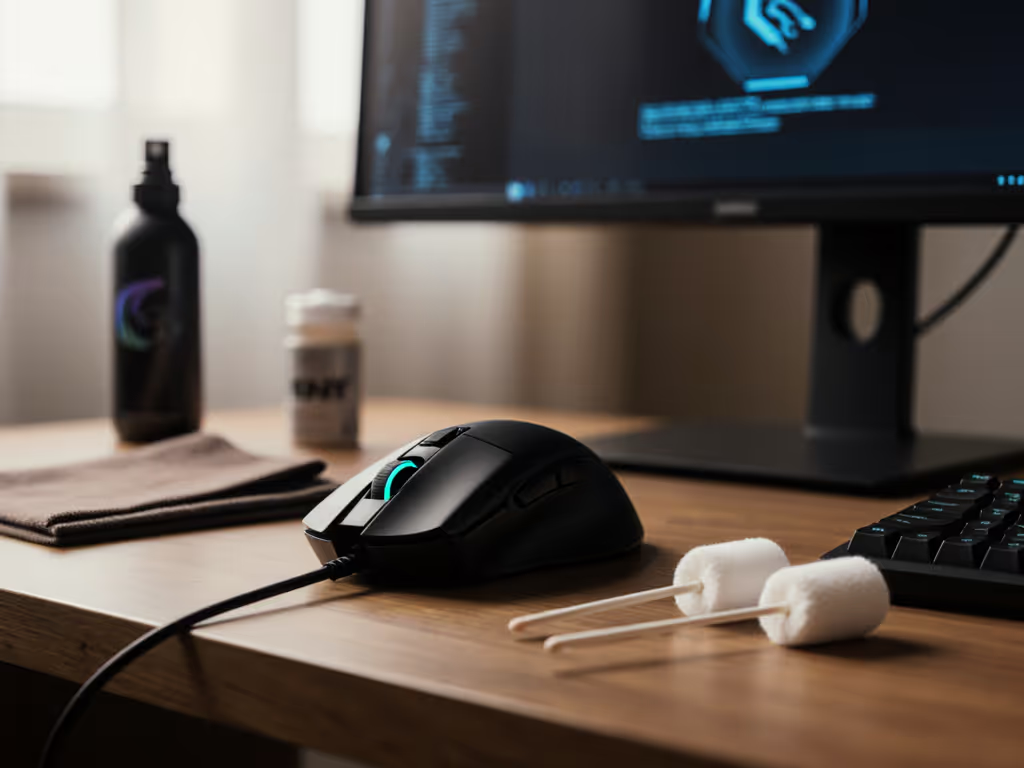
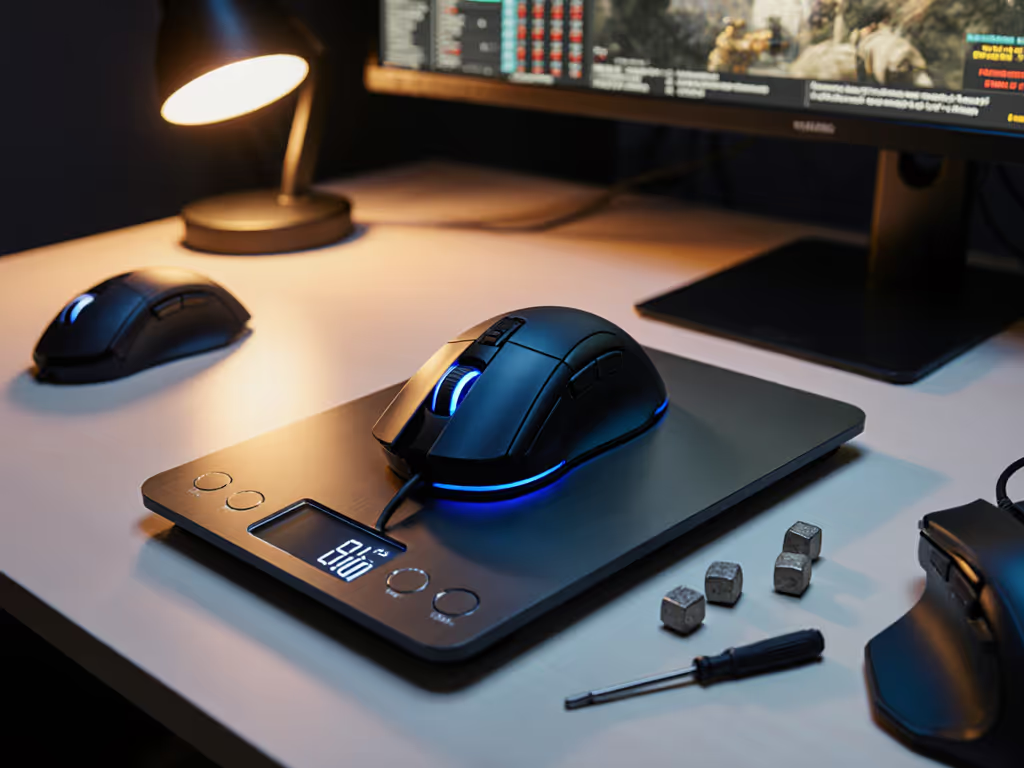
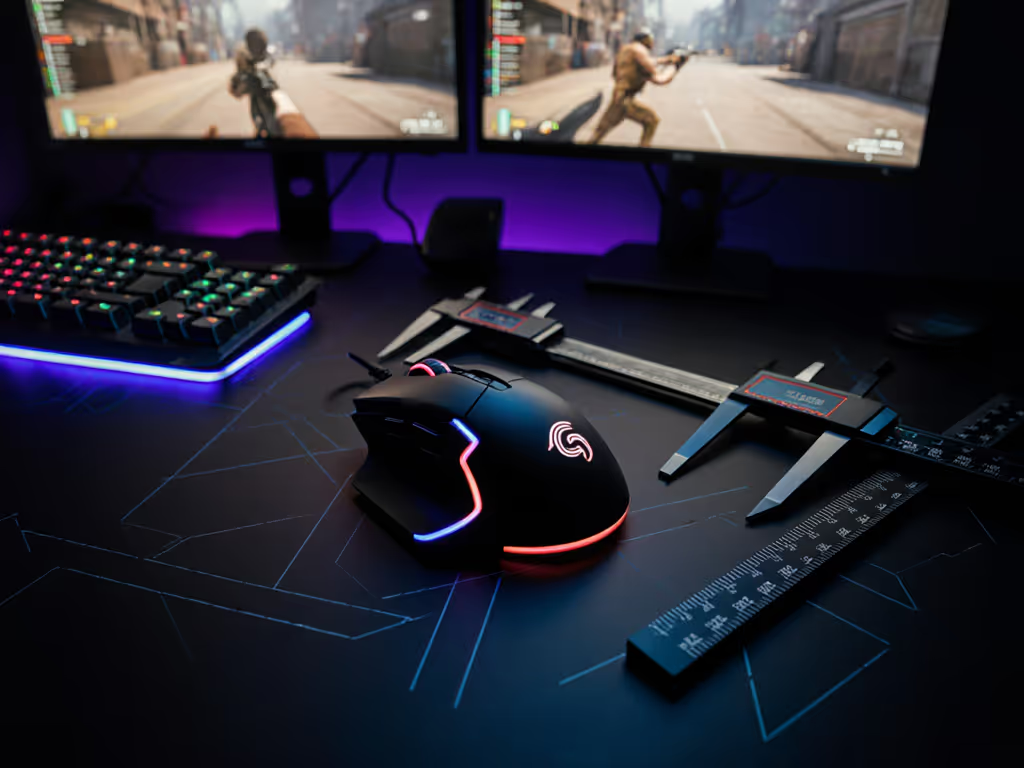
Palm Grip Gaming Mouse Guide: Geometry Over Guesswork
Prioritize shape over specs: match a mouse’s hump height, width, and taper to your hand geometry to stabilize aim and reduce latency. Use measurement formulas and a step-by-step testing protocol to find a palm-grip fit that lowers fatigue and improves flick consistency.
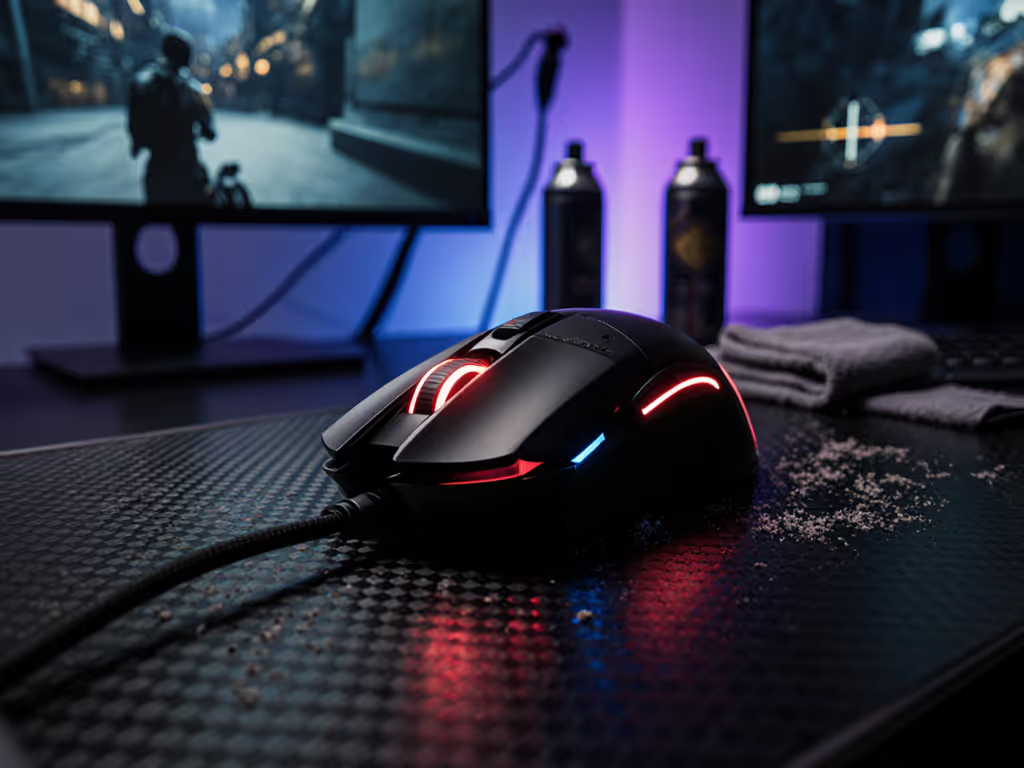
Gaming Mouse Sensor Cleaning: Prevent Tracking Issues Now
Clean and protect the sensor in under 8 minutes with a no-disassembly, solvent-free method that targets the real cause of drift and jitter. Diagnose issues, clean safely, and validate with simple tracking tests to restore precise aim and reduce strain over long sessions.
